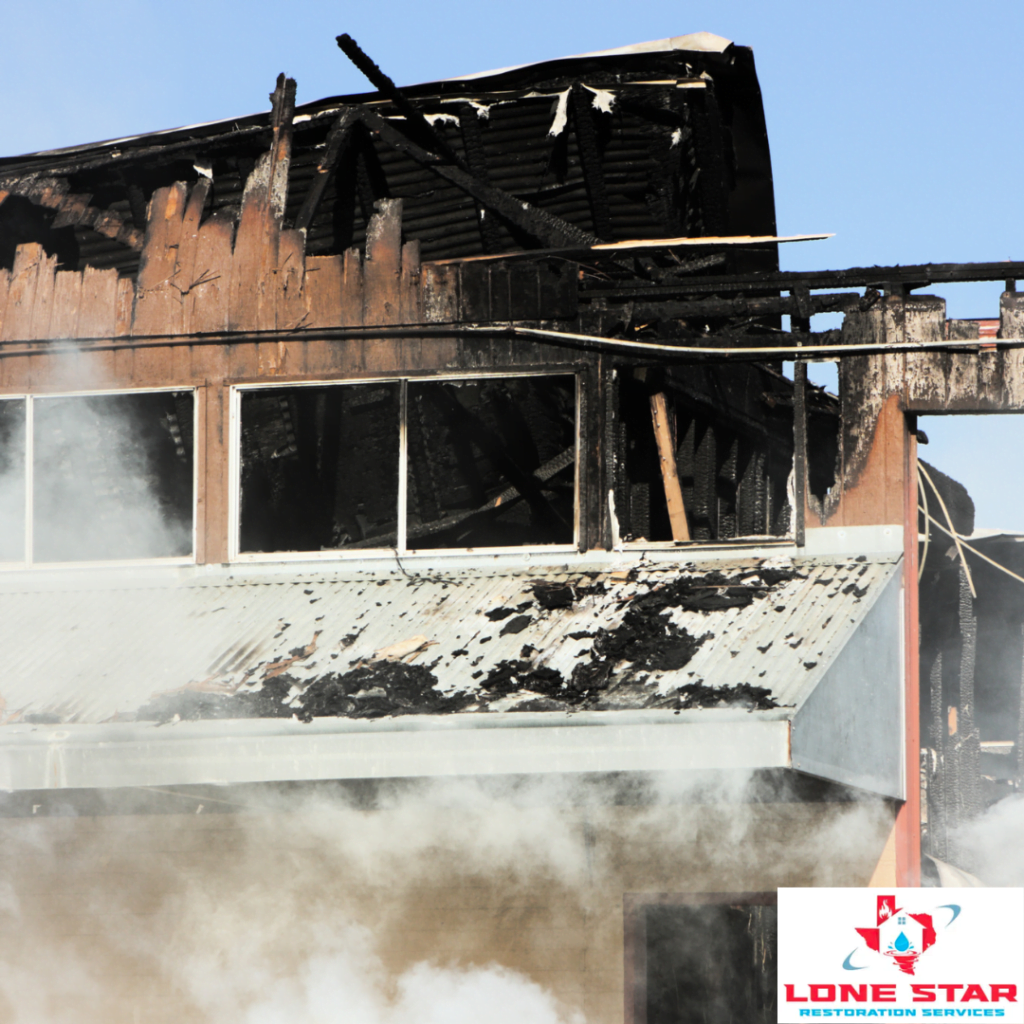Overcoming Fire Devastation: In-Depth Insights into Comprehensive Restoration
When Rising Above Fire Damages, the aftermath leaves more than just visible scars – it can shatter homes, memories, and a sense of security. The destructive force of fire isn’t limited to the flames; it permeates structures, belongings, and lives. Welcome to a closer look at the journey of restoration that follows fire damage. In the midst of devastation, the path to recovery begins with understanding the challenges that lie ahead.
This blog dives into the heart of comprehensive fire damage restoration, offering insights into the complex process that rebuilds what was lost. From the initial shock to the triumphant rise, this guide illuminates the steps that transform ruins into renewed spaces. In the face of adversity, restoration becomes a beacon of hope and healing – a way to rise above fire’s grip and reclaim what’s rightfully yours.
Understanding the Aftermath of Fire
The aftermath of a fire extends far beyond the immediate visual impact. It’s a multi-faceted ordeal that encompasses structural damage, residual threats, and health concerns. The destructive power of fire is relentless, affecting not only the surfaces it directly touches but also permeating materials, leaving hidden dangers in its wake.
Structural Damage: Fire weakens structures, compromising their integrity. Heat can warp metal, char wood, and even cause concrete to crack. This damage can render a building unstable, posing risks to anyone who enters.
Smoke and Soot Residue: Smoke and soot travel far from the fire’s source, leaving an insidious layer on surfaces. They contain harmful chemicals that corrode materials, and the residue can continue to damage surfaces if not addressed promptly.
Water Damage: The water used to douse the flames can lead to additional problems, from weakened structures to mold growth. Excess moisture seeps into walls, floors, and belongings, requiring specialized drying techniques.
Indoor Air Quality: Alongside visible damage, the air quality in a fire-damaged space can be hazardous. Toxic fumes released during combustion, coupled with the soot and smoke particles suspended in the air, can pose serious health risks.
Understanding these nuances is crucial for effective restoration. It’s not just about erasing the visible traces; it’s about addressing the hidden threats, restoring safety, and reclaiming the quality of life that a fire has disrupted. In the journey toward recovery, comprehensive restoration becomes a way to counteract the far-reaching impact of fire damage.
The First Steps Towards Restoration
In the immediate aftermath of a fire, the chaos can be overwhelming. Amid the shock and distress, taking the right steps becomes paramount to initiating the restoration process effectively. Safety and professional intervention are the cornerstones of this phase, setting the tone for the comprehensive restoration journey ahead.
Safety First: The aftermath of a fire presents risks ranging from structural instability to residual toxins. It’s crucial to prioritize safety above all else. Ensure that the property is deemed safe by authorities before re-entering. Wear appropriate personal protective equipment (PPE) when inspecting the damage, and be cautious of unstable surfaces.
Professional Assistance: As soon as safety permits, reach out to a professional fire damage restoration team. Their expertise is invaluable in assessing the extent of the damage and devising a tailored plan of action. Fire restoration professionals possess the tools, knowledge, and experience to handle the complexities of the restoration process.
Initial Assessment: Restoration experts conduct a thorough assessment to determine the scope of the damage. This assessment goes beyond visible damage, as professionals are trained to identify hidden issues that can worsen over time if left untreated.
Damage Documentation: Restoration professionals document the damage extensively, providing clear visual and written records. These records are vital for insurance claims and tracking the progress of the restoration process.
Temporary Repairs: In some cases, temporary repairs might be initiated to prevent further damage. This could involve tarping roofs, sealing openings, or stabilizing weakened structures.
The initial steps lay the foundation for the comprehensive restoration that follows. Promptly involving professionals ensures that the restoration process is strategic, safe, and efficient. This partnership between homeowners and restoration experts becomes the bridge that leads from devastation to renewal.
Thorough Assessment and Planning
Once safety has been established and professionals are on board, the restoration journey delves deeper into the assessment phase. This step is pivotal in designing a comprehensive restoration plan that addresses both the visible and hidden aspects of fire damage.
Comprehensive Inspection: Restoration experts meticulously examine the entire property, from the structure itself to the smallest crevices. This includes assessing the integrity of walls, ceilings, flooring, and more. The aim is to identify compromised areas that require attention.
Hidden Damage Detection: Fire damage isn’t always apparent at first glance. Professionals use advanced tools to detect hidden damage caused by heat, smoke, and water. This thorough approach prevents future surprises and ensures a complete restoration.
Customized Restoration Plan: Based on the assessment, restoration specialists craft a tailored restoration plan. This plan outlines the specific steps required to bring the property back to its pre-fire condition. It considers everything from structural repairs to content restoration.
Materials and Equipment Planning: Restoration teams decide on the materials, tools, and equipment necessary for the restoration process. This strategic planning optimizes efficiency and ensures that no crucial element is overlooked.
Clearing and Cleaning
With a restoration plan in place, the focus shifts to clearing out debris, damaged materials, and preparing the space for restoration work. Cleaning also begins to address the presence of soot and smoke residues that have settled on surfaces.
Debris Removal: Charred materials, remnants of belongings, and debris from firefighting efforts are carefully cleared away. This step prepares the space for a fresh start.
Soot and Smoke Residue Cleaning: Soot and smoke particles adhere stubbornly to surfaces, causing discoloration and damage over time. Professionals use specialized cleaning agents and techniques to meticulously remove these residues.
Content Sorting: Salvageable belongings are identified and categorized. Restoration experts determine which items can be restored, which need replacement, and which might require specialized treatment.
Pre-Restoration Cleaning: Before any restoration work begins, a thorough cleaning of the space is conducted. This step removes contaminants, ensuring a clean canvas for the upcoming restoration efforts.
By meticulously clearing and cleaning the affected areas, restoration teams pave the way for the intricate restoration work that follows. This process sets the stage for renewed spaces and a return to normalcy for property owners on their journey to rise above fire damage.
Smoke and Odor Removal
After the clearing and cleaning phase, the restoration process dives into addressing the persistent issue of smoke odors that can linger even after visible damage is removed. Smoke odors have the potential to affect indoor air quality and can be a constant reminder of the fire’s aftermath.
Assessment of Odor Penetration: Professionals assess the extent to which smoke odors have penetrated various materials and surfaces. This evaluation guides the targeted treatment approach.
Ozone Treatment: Ozone generators are commonly used in fire damage restoration. Ozone, a powerful oxidizing agent, is dispersed in the affected area. It reacts with smoke molecules, neutralizing odor particles.
Thermal Fogging: Thermal fogging involves releasing a specialized deodorizing solution as a fog. This fog penetrates the same pathways that the smoke took, effectively neutralizing odors.
HVAC System Cleaning: The HVAC system can circulate smoke odors throughout the property. Restoration professionals thoroughly clean and disinfect HVAC components to prevent the re-circulation of odorous particles.
Structural Repairs and Reconstruction
With the removal of debris, cleaning, and odor treatment complete, the focus shifts to rebuilding and restoring the property’s structural integrity. This phase combines expertise in construction with an understanding of the unique challenges posed by fire damage.
Assessment of Structural Damage: Professionals identify weakened areas that require structural repairs. This might include reinforcing load-bearing elements, replacing compromised materials, and addressing any compromised foundations.
Efficient Reconstruction: Restoration teams work meticulously to reconstruct the damaged areas. Skilled tradespeople ensure that repairs are carried out to code and match the original design and aesthetics of the property.
Matching Finishes: Professionals ensure that the materials and finishes used in reconstruction seamlessly match the rest of the property. This attention to detail restores the property’s appearance while addressing its functionality.
Code Compliance: Restoration professionals are well-versed in building codes and regulations. They ensure that all repairs and reconstruction align with these standards, guaranteeing the safety and compliance of the restored property.
The structural repairs and reconstruction phase bridges the gap between devastation and renewal. It not only restores the physical integrity of the property but also instills a sense of normalcy and hope for property owners who are determined to rise above the challenges posed by fire damage.
Preventive Measures for the Future
The journey of fire damage restoration concludes with a focus on prevention. By implementing preventive measures, property owners can mitigate the risk of future fire incidents.
Fire Safety Education: Professionals provide valuable insights into fire prevention, sharing tips on maintaining smoke detectors, practicing fire safety, and conducting regular safety drills.
Security and Alarm Systems: Recommending advanced security and alarm systems can enhance the property’s ability to detect and respond to fire incidents swiftly.
Homeowner Responsibility: Restoration teams stress the importance of homeowner responsibility in maintaining fire safety measures and conducting routine inspections.
By empowering property owners with preventive knowledge, restoration professionals help ensure that the restoration journey is not only a process of recovery but also a step toward a safer and more secure future.
Conclusion
The comprehensive restoration journey after fire damage is a testament to resilience, expertise, and dedication. From the initial steps of safety assessment to the meticulous cleaning, repairing, and restoring, the process is a blend of science, craftsmanship, and empathy. Rising above fire damage requires more than reconstruction; it demands an understanding of the holistic nature of recovery.
Restoration professionals don’t just rebuild structures; they help rebuild lives and restore hope. In the face of adversity, comprehensive fire damage restoration stands as a beacon of renewal, proving that even in the aftermath of destruction, the path to recovery is illuminated by the collective effort of experts, homeowners, and the strength of the human spirit.





